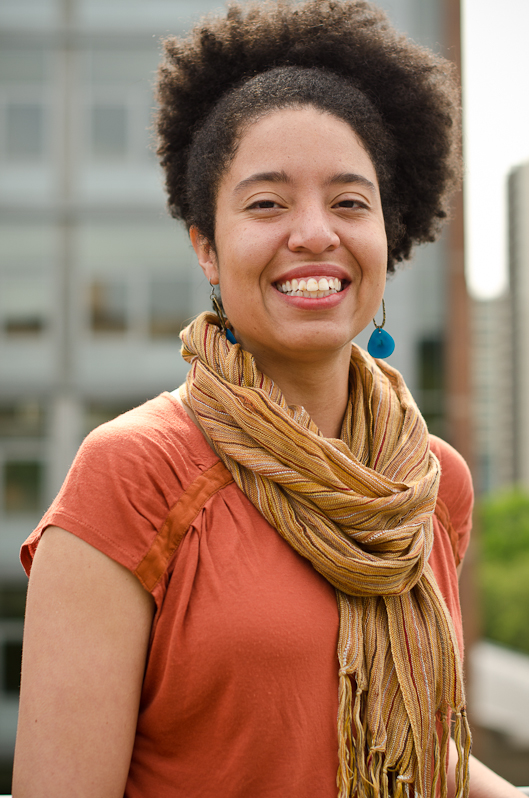On Tuesday, March 19th, Futurewise is welcoming activist scholar Dr. Lisa K. Bates, Ph.D. as our Keynote Speaker for the Spring Luncheon and Livable Communities Awards. Dr. Bates will be speaking on the topic “Housing Justice, not for ‘Just Us’”, a timely exploration of the false dichotomies that anchor the affordable housing debate and proposal for how we can advance equitable, effective affordable housing policy. In this month’s Wonkabout Washington, we’re giving you a preview of Dr. Bates’ work. If you’d like to meet her in person, join us at the Spring Luncheon and Livable Communities Awards, where The Urbanist will be receiving the Excellence in Smart Growth and Transportation Award. Tickets are sliding scale and available at Futurewise.org/luncheon.
Futurewise: Could you tell us a little about your research? What have you studied previously and what are you digging into next?
Dr. Bates: My research is all about housing in the many ways that it’s essential for people’s life and well-being, including the importance of the neighborhoods we can live in based on what housing is accessible to us. A lot of my research focuses on how historical discrimination by race has morphed into ongoing institutionalized discrimination — looking at the policy and planning decisions we’ve made and continue to make that disenfranchise people of color. A major mechanism for that has been urban renewal historically, or what we might call revitalization today. These policies and financial incentives have dramatically reshaped cities in the past and continue to do so with the gentrification we can identify today.
Next I’m continuing my work to explain exactly how displacement is happening in gentrifying neighborhoods — which housing is being lost and how? Who’s getting pushed out of housing opportunities? I’ve looked at how older, cheaper apartment buildings get sold and “flipped” or upgraded, at tenant screening policies, and next I’ll be trying to look at evictions. Likewise, I’m also looking at what can keep folks in place, what helps support them in neighborhoods, be it policies or social supports.
You’ve worked in the past with the city of Portland on racial equity in city planning and governance. What are cities like Portland and Seattle currently doing to correct historic inequities? What should they be doing?
The first thing these cities are doing, which is essential, is to name race and racism as a primary force in creating inequality, and to develop plans that require developing and evaluating racial equity strategies. A real challenge for doing anything about correcting past harms is that the civil rights and fair housing laws we’ve enacted to stop discrimination make it very difficult to target remedies to people of color. So both cities are doing great work to think about how do we advance racial equity through race-neutral policies and programs that are informed by a knowledge of history and of the complexity of institutions and human reactions to them.
For example, I learned that in Seattle, the court system realized that people of color weren’t responding to official letters as court notices, so they had to figure out different ways to communicate by text messages. They might not have figured that out without a policy directive to do so.
Down here, the Portland Housing Bureau developed a community preference policy for affordable housing wait lists in Northeast neighborhoods that’s based on your family’s experience with urban renewal over time. This is a race-neutral policy, it’s based on where you’ve lived, but because of the disparate impact of urban renewal on African-American communities, it will support many Black folks access to housing.
You previously served on the board of 1000 Friends (1KF) of Oregon, Futurewise’s sister organization in Oregon. How does the Growth Management Act in Oregon or Washington impact local zoning policies?
During my time on the board at 1KF, the organization was supporting amazing housing and anti-displacement work in Portland. The urban growth boundary — the tool for stopping sprawl — was threatened by claims that by stopping greenfields development, Oregon was restricting housing construction and creating an affordability crisis. In reality, the problems are inside the UGBs, with cities that restrict housing development through zoning and other regulations. As we looked at whether Oregon cities are meeting ‘Goal 10’ — that’s Oregon’s land use policy’s goal for diverse and ample housing — we found lots of ways for local planning to accommodate more units.
In my view, many planners haven’t thought too much about housing. We think about land use and know it’s residential, but we haven’t focused enough as a field on the actual housing needs and how to shape our plans and development environments to meet those needs. In the last few years on the west coast, the conversation about how local land use planning can and should address housing needs has been expanding, and that’s great. We can share best practices and model ordinances, develop our analysis chops, and most importantly, build up a political will for supporting housing in local plans.
Building off the previous question, what do you see as the role for activists and organizers to engage in shaping zoning policy?
The loudest voices in local land use have been, historically, NIMBY [not in my backyard] voices. These NIMBY voices have also been predominantly white and economically privileged homeowners. Local political opposition — not good technical planning practice — is why we have so much economic segregation driven by the kinds of housing available in different neighborhoods and different jurisdictions. So it’s essential to drown out those voices with all of us who want our communities to be inclusive and accessible.
We want the waitress at our local breakfast spot to be able to walk to work, we want our teachers to be able to buy a first home, we know that folks renting an apartment with a voucher are great neighbors, and we want to put an end to exclusionary white communities — and we’ve got to say that at public meetings and in local elections. And it’s not enough to promote ‘more housing.’ We also need to support anti-displacement policies that support renters’ rights and stabilize long-time residents as their communities grow.
What’s the future of affordable housing policy? Are there scholars, think tanks, non-profits, cities that you see doing innovative work? What are some new policies you’d like to see replicated in more places?
There is so much happening all around the country when it comes to housing policy and planning, with so much appetite for learning and building the practice for inclusive neighborhoods. Policylink is a great thinktank that supports ‘what works’ in policy and is currently supporting networks of cities where cross-sector teams are working on anti-displacement and equity policies. There’s also a lot of dialogue between housing and health practitioners supported by ChangeLab and major foundations like Kresge and Robert Wood Johnson. That collaboration can unlock so many resources and a whole new way to understand the value of housing as supporting physical and mental health.
Tenants’ rights policies and community preference or ‘right to return’ programs are coming up in more cities; likewise, eliminating exclusive single family home zoning and pushing for more density in key locations like near light rail is catching on. I’m also interested to see more cities seeking a community land trust model to support low-cost housing that remains affordable in perpetuity.
Thank you to Dr. Bates for this preview of her work! Join us on Tuesday, March 19th to hear Dr. Bates’ keynote speech: Futurewise.org/luncheon.
Futurewise works throughout Washington State to encourage healthy, equitable, and opportunity-rich communities and to protect our most valuable farmlands, forests and water resources through wise land use policies and practices. Founded to help support implementation of the first-in-the-nation Growth Management Act, we focus on directing equitable growth into our urbanized areas and preventing the conversion of wildlife habitat, open space, farmland, and working forests to subdivisions and development.



